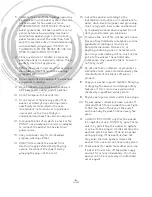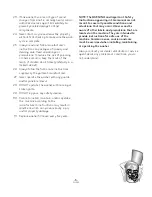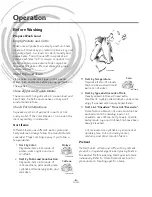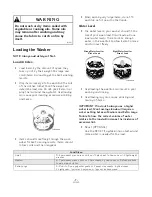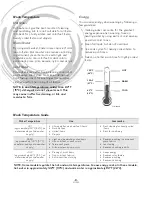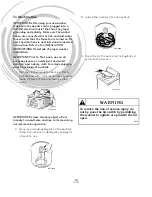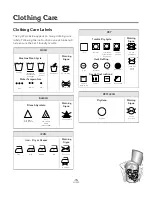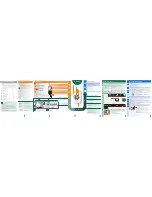
-9-
201959
Operating Your Washer
Determine Proper Cycle
(Some cycles may not be included on your model)
Regular Cycle
Use for sturdy items, like play or work clothes,
towels, T-shirts, etc. The wash time selection will
depend on the type of fabric and the amount of
soil. For the best results when cleaning heavily
soiled items, use a longer wash time (15 minutes
maximum). Lightly soiled items require less wash
time and spin out.
There are three settings in the REGULAR cycle –
Extra Clean, Normal and Light. On some models,
the number shown next to these settings is the
length of agitation in minutes. (For example:
Setting the timer on Extra Clean will be a 15
minute agitation.)
Permanent Press Cycle
Use for permanent press items and synthetics.
The wash time selection will depend upon the type
of fabric and amount of soil.
There are two settings in the PERMANENT
PRESS cycle – Normal and Light. On some
models, the number shown next to these settings
is the length of agitation in minutes. (For
example: Setting the timer on Normal will be a
nine minute agitation.)
Delicate Cycle
Wash delicate items usually washed by hand on
this cycle. A full tub of water is recommended
(even for small loads) to allow the delicate items
to move freely through the water. More water
helps reduce fabric wear, wrinkling, and provides
for a clean wash.
There are two settings in the DELICATE cycle –
Normal and Light. On some models, the number
shown next to these settings is the length of
time in minutes. (For example: Setting the timer
on Normal will be nine minutes, including short
periods of agitation and long periods of soaking.)
Soak/Prewash (on select models only)
Use for heavily soiled or stained clothing. During
the SOAK/PREWASH setting, the washtub will fill
with water, agitate for a reduced period of time,
pause for approximately 12 minutes, and spin out
to complete the cycle.
To reduce the risk of fire, electric shock,
serious injury or death to persons, read
the
Safety Information
section before
operating your washer.
W522
W A R N I N G
Summary of Contents for LWS02N Series
Page 28: ......




